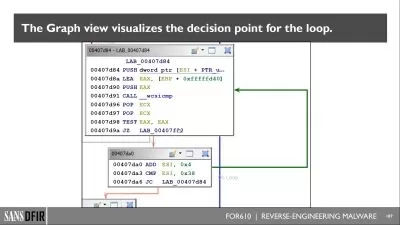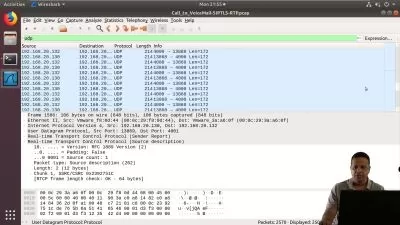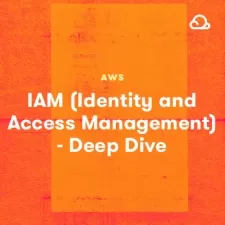Mastering NIST Risk Management Framework (RMF)
Stefan Toshkov Zhelyazkov
9:27:31
Description
Navigating Federal Standards, Control Implementation, and Continuous Monitoring
What You'll Learn?
- Familiarize Yourself with the Risk Management Framework Guide for Federal Information Systems
- Gain Proficiency in the Security and Privacy Control Guide for Federal Information Systems and Organizations
- In-Depth Study of NIST Standards - SP 800-37, SP 800-53, and SP 800-53A
- Analyzing Security Impacts
- Decode FIPS 199 and FIPS 200 Standards
- Navigate the 4-Step Security Categorization Process
- Craft a Sound Security Controls Baseline Selection Strategy
- Expertly Document the Security Control Implementation within the Security Plan
- Prepare a Thorough Security Assessment Report
- Undertake Certification and Accreditation
- Real-World Applications of the NIST Risk Management Framework
- Implementation of Information Security Controls and Rigorous Evaluation of the Control Set
Who is this for?
What You Need to Know?
More details
DescriptionAre you ready to become a certified expert in risk management and security control? Dive deep into the intricacies of the NIST Risk Management Framework (RMF) with our comprehensive online course. From understanding federal standards to hands-on control implementation and continuous monitoring, this course equips you with the knowledge and skills needed to excel in the field of information security and boost your understanding of best practices.
In the first phase, we lay the foundation for security and privacy management within an organization. We equip you with essential tools to prepare your organization for the comprehensive journey ahead.
Diving into Organizational Security Risk Management: This section delves into the realm of organizational risk management by shedding light on the various risks that senior leadership must discern. It underscores the importance and advantages of risk management and underscores the relevant information security regulations that leaders must take into account in their risk management endeavours.Â
Exploring Existing Risk Management Frameworks In the third segment, we embark on an exploration of diverse models that can be harnessed to implement the NIST RMF. The objective here is to offer a comparative evaluation of these models and showcase the unique qualities that set the NIST framework apart from its counterparts.
Classifying Information and Information Systems This phase commences with a detailed explanation of security impact analysis. It also explores CNSSI 1253 Security Categorization and Control Selection for National Security Systems, as well as FIPS 199 Standards for Security Categorization of Federal Information and Information Systems. These resources are examined, compared, and contrasted to serve as guidance for organizations in the information system categorization process. The primary focus here revolves around comprehending the tables provided in NIST SP 800-60, Guide for Mapping Types of Information and Information Systems, security categories, and the utilization of FIPS 199 for implementing the security categorization process within the NIST RMF.
Handpicking Security Measures: This portion opens with an introduction to FIPS 200, Minimum Security Requirements for Federal Information and Information Systems, which plays a pivotal role in defining security boundaries and establishing minimum security prerequisites. It also delves into the contents of the security plan and the continuous monitoring strategy, both of which are integral outcomes of the control selection process.
Executing Security Measures: The sixth section kicks off with an examination of the system development life cycle (SDLC) and elucidates the timing of activities associated with security control implementation. It emphasizes the significance of the standards development and acquisition processes in crafting an organizational information security architecture that seamlessly integrates with the enterprise architecture.
Scrutinizing Security Measures Here, we initiate our discussion by employing NIST 800-30, Guide for Conducting Risk Assessments, as a guide to comprehending the security risk assessment process. It's important to grasp that security risk assessment and security control assessment are distinct yet interrelated processes. This segment chiefly concentrates on how to use NIST SP 800-53A, Assessing Security and Privacy Controls in Federal Information Systems and Organizations—Building Effective Assessment Plans, which encompasses the development of a security control assessment plan. This section underscores how, through a well-structured security control assessment based on an established plan, organizations can identify and address potential security risks.
Authorizing Information Systems: The initial component of this section offers an exhaustive exploration of the creation and distribution of the security authorization package. This package includes critical components such as the security plan, security assessment report, and the plan of action and milestones. We initiate our discussion with an examination of the criteria that these components must meet, along with the formulation of a plan of action and milestones. This section illustrates that the plan acts as a roadmap for rectifying security vulnerabilities or shortcomings identified during the security control assessment.
Maintaining Security Vigilance: In this segment, we place a strong emphasis on the strategies associated with continuous security control assessments, plans for addressing remediation, procedures for updating documentation and plans, implementation of security status reporting mechanisms, strategies for ongoing risk assessment and acceptance, and secure practices for information system decommissioning.
The final section offers a wealth of real-world insights through practical case studies, presenting model scenarios for implementing the RMF in diverse organizational contexts. These case studies provide a concrete understanding of the practicalities and challenges of enterprise risk management, offering valuable strategies for RMF implementation across different settings.
Who this course is for:
- Anyone Interested in Information Security
- Information Security Professionals
- IT Managers and System Administrators
- Compliance and Regulatory Experts
Are you ready to become a certified expert in risk management and security control? Dive deep into the intricacies of the NIST Risk Management Framework (RMF) with our comprehensive online course. From understanding federal standards to hands-on control implementation and continuous monitoring, this course equips you with the knowledge and skills needed to excel in the field of information security and boost your understanding of best practices.
In the first phase, we lay the foundation for security and privacy management within an organization. We equip you with essential tools to prepare your organization for the comprehensive journey ahead.
Diving into Organizational Security Risk Management: This section delves into the realm of organizational risk management by shedding light on the various risks that senior leadership must discern. It underscores the importance and advantages of risk management and underscores the relevant information security regulations that leaders must take into account in their risk management endeavours.Â
Exploring Existing Risk Management Frameworks In the third segment, we embark on an exploration of diverse models that can be harnessed to implement the NIST RMF. The objective here is to offer a comparative evaluation of these models and showcase the unique qualities that set the NIST framework apart from its counterparts.
Classifying Information and Information Systems This phase commences with a detailed explanation of security impact analysis. It also explores CNSSI 1253 Security Categorization and Control Selection for National Security Systems, as well as FIPS 199 Standards for Security Categorization of Federal Information and Information Systems. These resources are examined, compared, and contrasted to serve as guidance for organizations in the information system categorization process. The primary focus here revolves around comprehending the tables provided in NIST SP 800-60, Guide for Mapping Types of Information and Information Systems, security categories, and the utilization of FIPS 199 for implementing the security categorization process within the NIST RMF.
Handpicking Security Measures: This portion opens with an introduction to FIPS 200, Minimum Security Requirements for Federal Information and Information Systems, which plays a pivotal role in defining security boundaries and establishing minimum security prerequisites. It also delves into the contents of the security plan and the continuous monitoring strategy, both of which are integral outcomes of the control selection process.
Executing Security Measures: The sixth section kicks off with an examination of the system development life cycle (SDLC) and elucidates the timing of activities associated with security control implementation. It emphasizes the significance of the standards development and acquisition processes in crafting an organizational information security architecture that seamlessly integrates with the enterprise architecture.
Scrutinizing Security Measures Here, we initiate our discussion by employing NIST 800-30, Guide for Conducting Risk Assessments, as a guide to comprehending the security risk assessment process. It's important to grasp that security risk assessment and security control assessment are distinct yet interrelated processes. This segment chiefly concentrates on how to use NIST SP 800-53A, Assessing Security and Privacy Controls in Federal Information Systems and Organizations—Building Effective Assessment Plans, which encompasses the development of a security control assessment plan. This section underscores how, through a well-structured security control assessment based on an established plan, organizations can identify and address potential security risks.
Authorizing Information Systems: The initial component of this section offers an exhaustive exploration of the creation and distribution of the security authorization package. This package includes critical components such as the security plan, security assessment report, and the plan of action and milestones. We initiate our discussion with an examination of the criteria that these components must meet, along with the formulation of a plan of action and milestones. This section illustrates that the plan acts as a roadmap for rectifying security vulnerabilities or shortcomings identified during the security control assessment.
Maintaining Security Vigilance: In this segment, we place a strong emphasis on the strategies associated with continuous security control assessments, plans for addressing remediation, procedures for updating documentation and plans, implementation of security status reporting mechanisms, strategies for ongoing risk assessment and acceptance, and secure practices for information system decommissioning.
The final section offers a wealth of real-world insights through practical case studies, presenting model scenarios for implementing the RMF in diverse organizational contexts. These case studies provide a concrete understanding of the practicalities and challenges of enterprise risk management, offering valuable strategies for RMF implementation across different settings.
Who this course is for:
- Anyone Interested in Information Security
- Information Security Professionals
- IT Managers and System Administrators
- Compliance and Regulatory Experts
User Reviews
Rating
Stefan Toshkov Zhelyazkov
Instructor's Courses
Udemy
View courses Udemy- language english
- Training sessions 81
- duration 9:27:31
- Release Date 2023/11/21




















